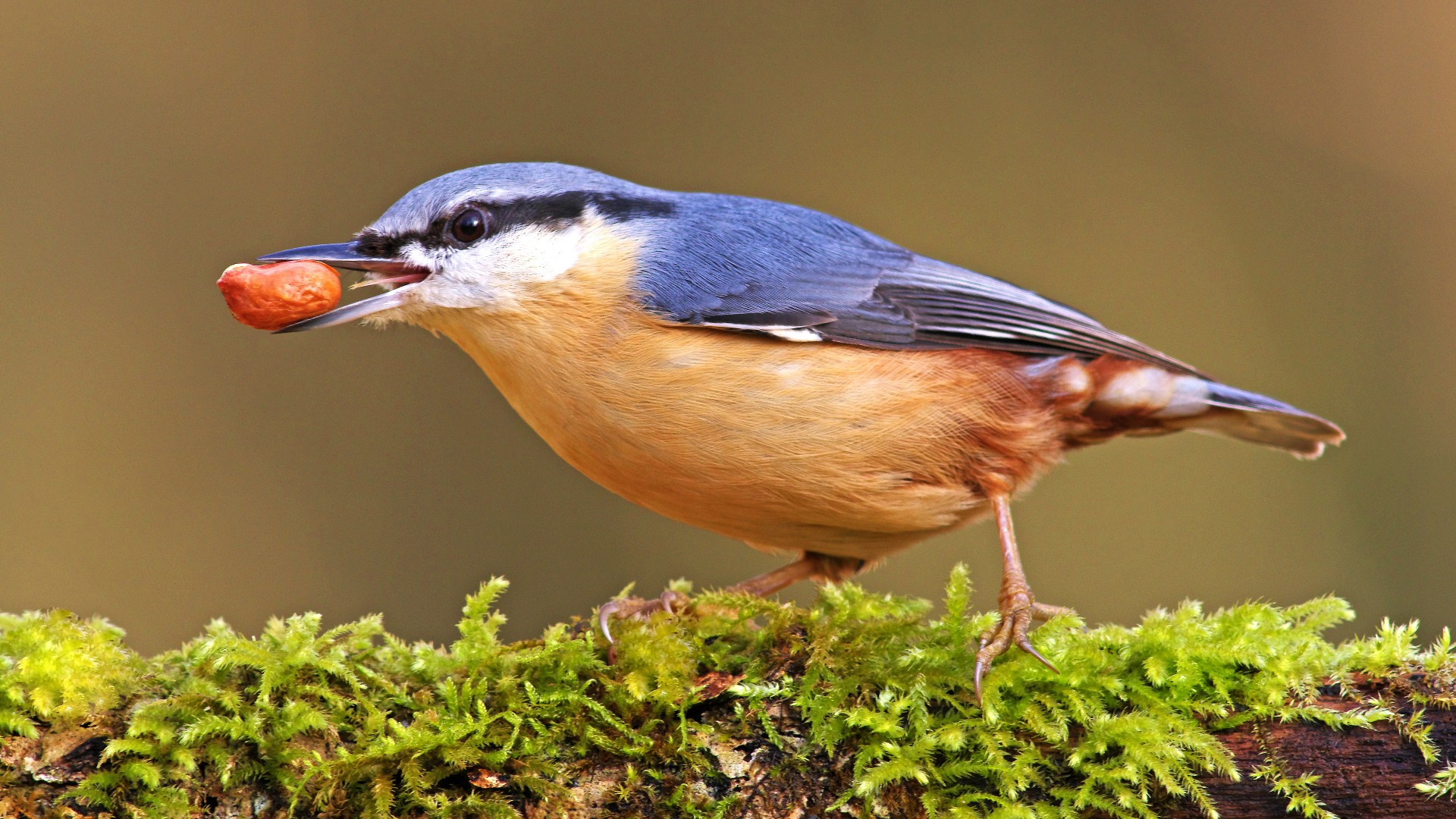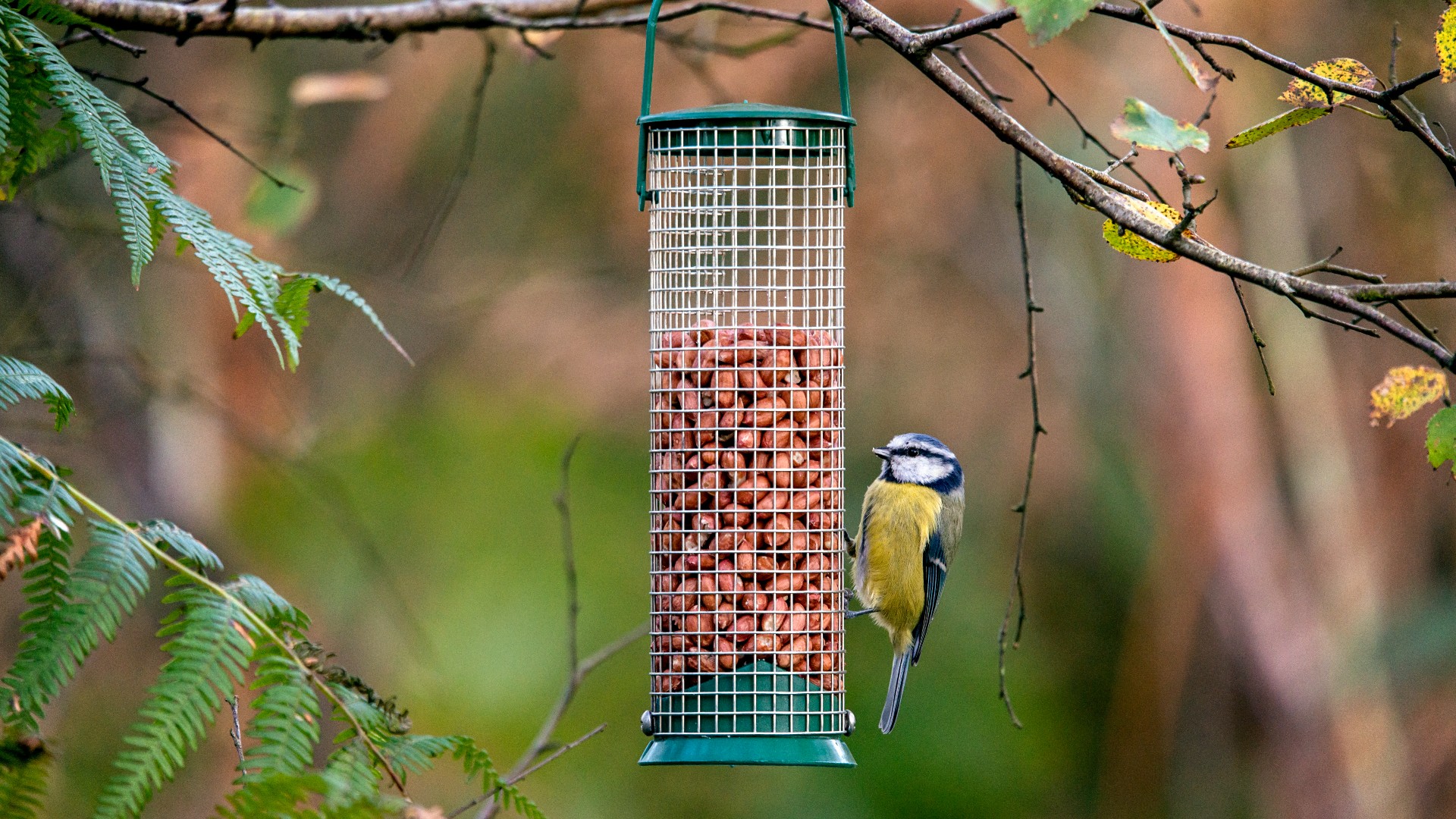Feeding birds peanuts guide
Our feeding birds peanuts guide has everything you need to know to help you serve up this nutritious and delicious snack to your feathered friends

There’s nothing a wild bird loves more than a good nut to sink their beak into and our feeding birds peanuts guide has everything you need to know about this popular nut that’s not actually a nut. Yes, that’s right, while it may contain ‘nut’ in the name, the peanut you put into the best bird feeder for your feathered friends is actually a legume, so it’s officially part of the bean family.
Not that that little factoid is of any interest to the wild birds who flock to your backyard and enjoy flitting around your hanging bird feeder munching on their favorite snack. All they care about is that the peanut is delicious. But, as luck would have it, peanuts are also highly nutritious, making them the ideal refill for your feeder.
If you’ve been wondering how to attract birds to your garden, the humble peanut might just be your secret weapon. A wide range of birds love nibbling on this tasty treat and, believe it or not, there are lots of different ways that you can serve this snack up to keep things interesting.
In our feeding birds peanuts guide, you’ll find everything you need to know about this nutritious nut, including which birds love them, how to feed birds peanuts and what you need to know about peanut safety. Before you dive in, we recommend investing in one of the best squirrel proof bird feeders if you don’t already have one because, as you’ve probably already noticed, our feathered friends aren’t the only ones that go nuts for nuts!
- What to feed a baby bird: A vet's guide to caring for a fledgling
- What to feed birds from the kitchen
- How to hang a bird feeder with or without a tree
Are peanuts good for birds?
Peanuts are an excellent food source for birds and a great addition to any bird feeder. Not only do birds love the taste of peanuts, but they’re also high in fat, which makes them a great source of energy and calories and one of the best bird foods.
This is particularly important in the colder months, when birds may struggle to find food. Offering peanuts all year round means that birds can store them away for the winter, giving them a vital hit of nutrition when resources are at their most scarce.
But it’s not just good fats that peanuts are rich in. They also provide high amounts of protein and fiber, the former of which is vital for growing and maintaining strong feathers, which allows for proper flight and ensures adequate insulation.
Get the best advice, tips and top tech for your beloved Pets
Birds that love peanuts
If you’re wanting to attract a wide range of wild birds to your yard, you’re in luck - while very small birds such as hummingbirds and finches won’t eat peanuts, there’s a long and colorful list of birds that will. These include:
- Brambling
- Chickadee
- Crow
- Dove
- Grackle
- House sparrow
- Jay
- Northern Cardinal
- Nuthatch
- Raven
- Tit
- Wren
- Woodpecker
There are lots of different ways that you can serve peanuts up to your feathered friends and how you do so will determine which birds are more likely to gobble them up. Let’s take a look at the different options.
How to feed peanuts to birds

You’d be forgiven for thinking there was only one way to serve up a peanut, but believe it or not, there are several serving options that can help keep things varied and interesting for the wild birds that frequent your feeder.
The first way to offer peanuts to birds is in their shell and let them forage for their food. This is particularly great for bigger birds, like crows and magpies, who thrive on the mental and physical stimulation they get from chipping away at the shells with their beaks.
When it comes to dishing up peanuts in their shell, you can place them on a ground feeder, or, to make things a little more interesting, you can actually string them with thread (a bit like you would do with popcorn) and hang them up around your garden.
Birds of all sizes will appreciate shelled peanuts that are either served as halves or broken up into small chunks. Some of the most popular birdseed wreath recipes use peanuts as one of the core ingredients, so if you love being creative, this can be a great way to offer up peanuts to your feathered friends in a really special way.
If you choose not to opt for a wreath, we recommend steering clear of serving broken up bits of peanut on a ground feeder as small pieces attract small birds who are more prone to falling prey to predators, such as cats. You can buy bird feeders that have been specially designed for peanuts, so investing in one of these is a great option.
Your final option for serving up peanuts to the wild birds in your garden is to opt for the universal bird and human favorite - peanut butter. Smear smooth or crunchy peanut butter on a tree trunk, add it to a wreath or suet cake, or add dabs all over your ground or hanging feeder. Whichever way you go, you can rest assured this creamy and sticky foodstuff will be a huge hit.
Peanut safety
While peanuts make for a delicious and nutritious snack for wild birds, there are a few things you need to be aware of from a safety perspective to ensure your birds can eat this food and stay happy and healthy.
First up, stick to plain peanuts only. Birds are unable to process high levels of salt and should never be given salted, smoked, seasoned or roasted nuts. Consuming these sorts of nuts can cause serious illness and even death. You’ll also want to avoid chocolate-covered peanuts and baked goods that contain peanuts, as these are not suitable for birds.
Precautions also need to be taken with how you serve up peanuts during the breeding season. During this time, avoid whole peanuts and stick to broken up pieces of peanut only. This is because mother birds will often feed the nuts to their chicks and whole peanuts present a choking hazard. So, make sure you crush those peanuts up nice and small or steer clear during this time of year.
Finally, only put out small amounts of peanuts at a time. Peanuts are very susceptible to mold, and, in particular, the fungus Aspergillus Flavus, which releases a poisonous toxin called aflatoxin. This carcinogen is seriously harmful to birds and can cause respiratory infections and death. Topping up your feeder regularly with small amounts of peanuts will ensure they always remain fresh and safe to eat.
You might also want to read: What not to feed wild birds.

Kathryn is a freelance writer who has been a member of the PetsRadar family since it launched in 2020. Highly experienced in her field, she's driven by a desire to provide pet parents with accurate, timely, and informative content that enables them to provide their fur friends with everything they need to thrive.
Kathryn works closely with vets and trainers to ensure all articles offer the most up-to-date information across a range of pet-related fields, from insights into health and behavior issues to tips on products and training.
When she’s not busy crafting the perfect sentence for her features, buying guides and news pieces, she can be found hanging out with her family (which includes one super sassy cat and a kitten), drinking copious amounts of Jasmine tea and reading all the books.
She has written for a range of publications, including Fit&Well, Top Ten Reviews, LiveScience, Goodto, and Product Hunt.
